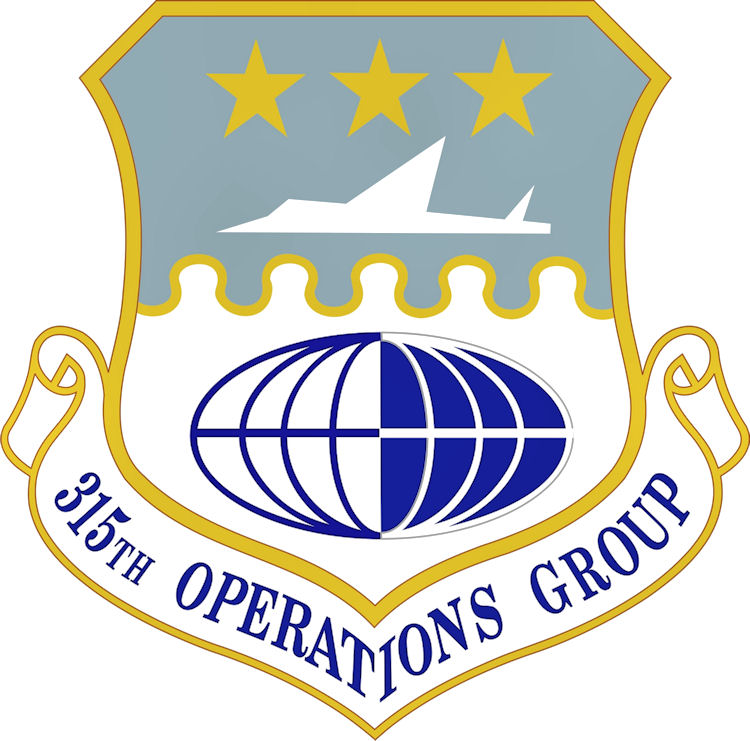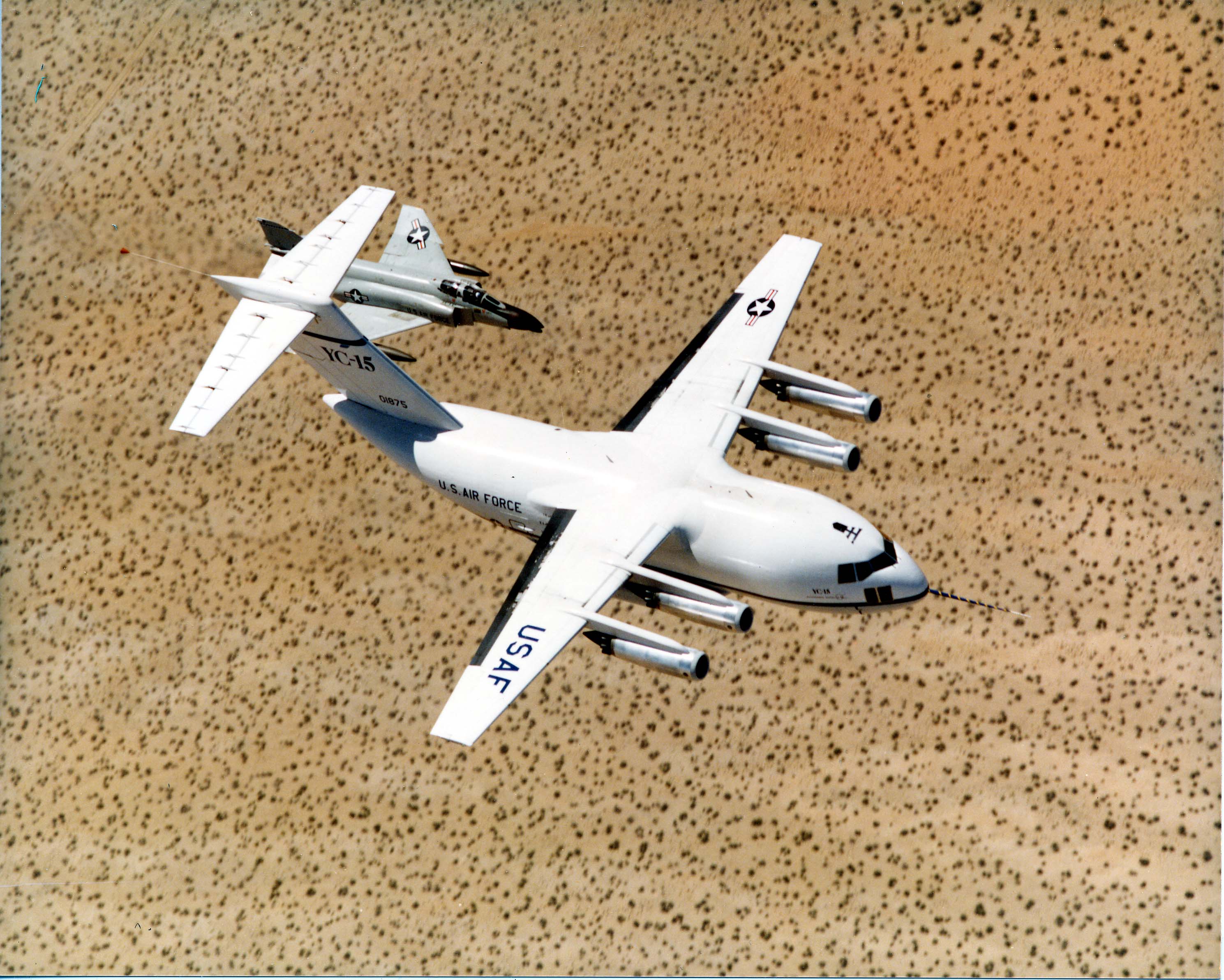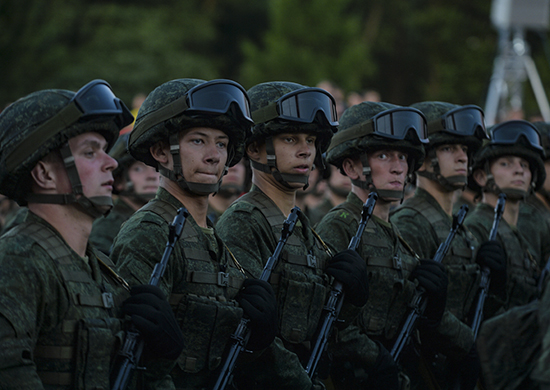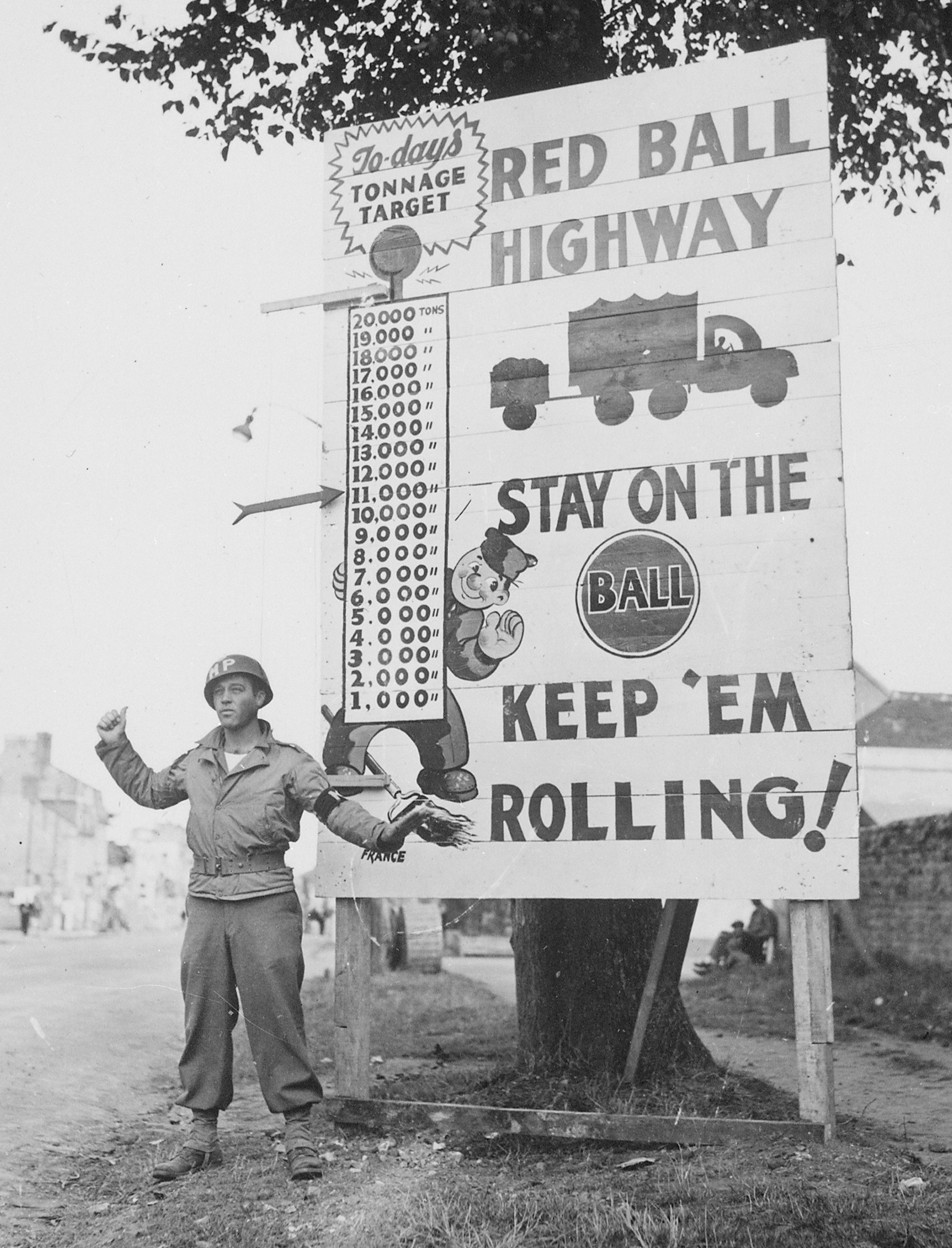|
315th Operations Group
The 315th Operations Group is a United States Air Force Reserve unit assigned to the 315th Airlift Wing. The unit is stationed at Charleston Air Force Base, South Carolina. The 315th Group controls all operational McDonnell Douglas C-17 Globemaster III flying squadrons of the 315th Airlift Wing. It was activated in 1992, when Air Force Reserve Command implemented the Objective Wing organization. The unit was first activated during World War II as the 315th Troop Carrier Group, a Douglas C-47 Skytrain transport unit assigned to IX Troop Carrier Command in Western Europe. The group received a Distinguished Unit Citation for its combat parachute infantry drops during the Invasion of France (Operation Overlord); the airborne invasion of the Netherlands ( Operation Market-Garden); and the airborne crossing of the Rhine River, ( Operation Varsity). The group was reactivated in Japan during the Korean War in 1952, replacing the 437th Troop Carrier Group, a reserve unit that had ... [...More Info...] [...Related Items...] OR: [Wikipedia] [Google] [Baidu] |
C-17 Globemaster III
The McDonnell Douglas/Boeing C-17 Globemaster III is a large military transport aircraft that was developed for the United States Air Force (USAF) from the 1980s to the early 1990s by McDonnell Douglas. The C-17 carries forward the name of two previous piston-engined military cargo aircraft, the Douglas C-74 Globemaster and the Douglas C-124 Globemaster II. The C-17 is based upon the YC-15, a smaller prototype airlifter designed during the 1970s. It was designed to replace the Lockheed C-141 Starlifter, and also fulfill some of the duties of the Lockheed C-5 Galaxy. Compared to the YC-15, the redesigned airlifter differed in having swept wings, increased size, and more powerful engines. Development was protracted by a series of design issues, causing the company to incur a loss of nearly US$1.5 billion on the program's development phase. On 15 September 1991, roughly one year behind schedule, the first C-17 performed its maiden flight. The C-17 formally entered USAF service o ... [...More Info...] [...Related Items...] OR: [Wikipedia] [Google] [Baidu] |
McDonnell Douglas C-17 Globemaster III
The McDonnell Douglas/Boeing C-17 Globemaster III is a large military transport aircraft that was developed for the United States Air Force (USAF) from the 1980s to the early 1990s by McDonnell Douglas. The C-17 carries forward the name of two previous piston-engined military cargo aircraft, the Douglas C-74 Globemaster and the Douglas C-124 Globemaster II. The C-17 is based upon the YC-15, a smaller prototype airlifter designed during the 1970s. It was designed to replace the Lockheed C-141 Starlifter, and also fulfill some of the duties of the Lockheed C-5 Galaxy. Compared to the YC-15, the redesigned airlifter differed in having swept wings, increased size, and more powerful engines. Development was protracted by a series of design issues, causing the company to incur a loss of nearly US$1.5 billion on the program's development phase. On 15 September 1991, roughly one year behind schedule, the first C-17 performed its maiden flight. The C-17 formally entered USAF service o ... [...More Info...] [...Related Items...] OR: [Wikipedia] [Google] [Baidu] |
300th Airlift Squadron
The 300th Airlift Squadron is part of the 315th Airlift Wing at Charleston Air Force Base, South Carolina. It operates Boeing C-17 Globemaster III aircraft supporting the United States Air Force global reach mission worldwide. Mission Train and equip C-17 aircrews for global air-land and airdrop operations. History World War II During World War II the 300th airlifted military supplies from India to Allied forces in Burma and China in 1943. Military Air Transport Service It flew airlift missions within Japan and to Southeast Asia from 1952 to 1955. The squadron airlifted US ex- prisoners of war from Japan to the U.S. following the Korean War and transported French troops wounded in the First Indochina War from Japan to France and Algeria in 1954. Air Force Reserve It has flown worldwide airlift missions since 1969. Specifically, the 300th airlifted U.S. troops to Grenada and U.S. students from Grenada to the U.S. in 1983 and supported the 1989 contingency operation in P ... [...More Info...] [...Related Items...] OR: [Wikipedia] [Google] [Baidu] |
Airlift
An airlift is the organized delivery of supplies or personnel primarily via military transport aircraft. Airlifting consists of two distinct types: strategic and tactical. Typically, strategic airlifting involves moving material long distances (such as across or off the continent or theater), whereas a tactical airlift focuses on deploying resources and material into a specific location with high precision. Depending on the situation, airlifted supplies can be delivered by a variety of means. When the destination and surrounding airspace is considered secure, the aircraft will land at an appropriate airport or airbase to have its cargo unloaded on the ground. When landing the craft or distributing the supplies to a certain area from a landing zone by surface transportation is not an option, the cargo aircraft can drop them in mid-flight using parachutes attached to the supply containers in question. When there is a broad area available where the intended receivers have c ... [...More Info...] [...Related Items...] OR: [Wikipedia] [Google] [Baidu] |
Brady Air Base
, formerly known as Itazuke Air Base, is an international and domestic airport located east of Hakata Station in Hakata-ku, Fukuoka, Japan. Fukuoka Airport is the principal airport on the island of Kyushu and is the fourth busiest passenger airport in Japan. As of 2017, the airport is the fourth busiest single-runway airport in the world by passenger traffic (after Mumbai, London–Gatwick and İstanbul-Sabiha Gökçen). The airport is surrounded by residential areas; flights stop at 10 p.m. at the request of local residents and resume operation at 7 a.m. The domestic terminal is connected to the city by the Fukuoka City Subway, and a subway from the airport to the business district takes less than ten minutes. The international terminal is only accessible by road, although there is scheduled bus service to Hakata Station and the Tenjin area. Alternatives to access the Fukuoka area include Saga Airport and Kitakyushu Airport. Airlines and destinations Passenger H ... [...More Info...] [...Related Items...] OR: [Wikipedia] [Google] [Baidu] |
Military Reserve Force
A military reserve force is a military organization whose members have military and civilian occupations. They are not normally kept under arms, and their main role is to be available when their military requires additional manpower. Reserve forces are generally considered part of a permanent standing body of armed forces, and allow a nation to reduce its peacetime military expenditures and maintain a force prepared for war. In countries with a volunteer military, such as Canada, Spain, the United States and the United Kingdom, reserve forces are civilians who maintain military skills by training periodically (typically one weekend per month). They may do so as individuals or as members of standing reserve regiments—for example, the UK's Army Reserve (United Kingdom), Army Reserve. A militia, home guard, State defense force, state guard or state military may constitute part of a military reserve force, such as the National Guard (United States), United States National Guard a ... [...More Info...] [...Related Items...] OR: [Wikipedia] [Google] [Baidu] |
Operation Varsity
Operation Varsity (24 March 1945) was a successful airborne forces operation launched by Allied troops that took place toward the end of World War II. Involving more than 16,000 paratroopers and several thousand aircraft, it was the largest airborne operation in history to be conducted on a single day and in one location. ''Varsity'' was part of Operation Plunder, the Anglo-American-Canadian assault under Field Marshal Bernard Montgomery to cross the northern Rhine River and from there enter Northern Germany. ''Varsity'' was meant to help the surface river assault troops secure a foothold across the Rhine River in Western Germany by landing two airborne divisions on the eastern bank of the Rhine near the village of Hamminkeln and the town of Wesel. The plans called for the dropping of two divisions from U.S. XVIII Airborne Corps, under Major General Matthew B. Ridgway, to capture key territory and to generally disrupt German defenses to aid the advance of Allied ground forces. ... [...More Info...] [...Related Items...] OR: [Wikipedia] [Google] [Baidu] |
Rhine River
), Surselva, Graubünden, Switzerland , source1_coordinates= , source1_elevation = , source2 = Rein Posteriur/Hinterrhein , source2_location = Paradies Glacier, Graubünden, Switzerland , source2_coordinates= , source2_elevation = , source_confluence = Reichenau , source_confluence_location = Tamins, Graubünden, Switzerland , source_confluence_coordinates= , source_confluence_elevation = , mouth = North Sea , mouth_location = Netherlands , mouth_coordinates = , mouth_elevation = , progression = , river_system = , basin_size = , tributaries_left = , tributaries_right = , custom_label = , custom_data = , extra = The Rhine ; french: Rhin ; nl, Rijn ; wa, Rén ; li, Rien; rm, label= Sursilvan, Rein, rm, label= Sutsilvan and Surmiran, Ragn, rm, label=Rumantsch Grischun, Vallader and Puter, Rain; it, Reno ; gsw, Rhi(n), including i ... [...More Info...] [...Related Items...] OR: [Wikipedia] [Google] [Baidu] |
Operation Market-Garden
Operation Market Garden was an Allied military operation during the Second World War fought in the Netherlands from 17 to 27 September 1944. Its objective was to create a salient into German territory with a bridgehead over the River Rhine, creating an Allied invasion route into northern Germany. This was to be achieved by two sub-operations: seizing nine bridges with combined U.S. and British airborne forces (Market) followed by land forces swiftly following over the bridges (Garden). The airborne operation was planned and undertaken by the First Allied Airborne Army with the land operation by XXX Corps of the British Second Army.The Battle for the Rhine 1944 by Robin Neillands, Chapter 4 The Road to Arnhem Although the largest airborne operation of the war up to that point, Market Garden's ultimate outcome remains debated: The operation succeeded in liberating the Dutch cities of Eindhoven and Nijmegen along with many towns, and limited V-2 rocket launching sites. However, ... [...More Info...] [...Related Items...] OR: [Wikipedia] [Google] [Baidu] |
Netherlands
) , anthem = ( en, "William of Nassau") , image_map = , map_caption = , subdivision_type = Sovereign state , subdivision_name = Kingdom of the Netherlands , established_title = Before independence , established_date = Spanish Netherlands , established_title2 = Act of Abjuration , established_date2 = 26 July 1581 , established_title3 = Peace of Münster , established_date3 = 30 January 1648 , established_title4 = Kingdom established , established_date4 = 16 March 1815 , established_title5 = Liberation Day (Netherlands), Liberation Day , established_date5 = 5 May 1945 , established_title6 = Charter for the Kingdom of the Netherlands, Kingdom Charter , established_date6 = 15 December 1954 , established_title7 = Dissolution of the Netherlands Antilles, Caribbean reorganisation , established_date7 = 10 October 2010 , official_languages = Dutch language, Dutch , languages_type = Regional languages , languages_sub = yes , languages = , languages2_type = Reco ... [...More Info...] [...Related Items...] OR: [Wikipedia] [Google] [Baidu] |
Operation Overlord
Operation Overlord was the codename for the Battle of Normandy, the Allies of World War II, Allied operation that launched the successful invasion of German-occupied Western Front (World War II), Western Europe during World War II. The operation was launched on 6 June 1944 (D-Day) with the Normandy landings. A 1,200-plane Airborne forces, airborne assault preceded an amphibious warfare, amphibious assault involving more than 5,000 vessels. Nearly 160,000 troops crossed the English Channel on 6 June, and more than two million Allied troops were in France by the end of August. The decision to undertake a cross-channel invasion in 1944 was taken at the Washington Conference (1943), Trident Conference in Washington, D.C., Washington in May 1943. General Dwight D. Eisenhower was appointed commander of Supreme Headquarters Allied Expeditionary Force, and General Bernard Montgomery was named commander of the 21st Army Group, which comprised all the land forces involved in the invasio ... [...More Info...] [...Related Items...] OR: [Wikipedia] [Google] [Baidu] |









